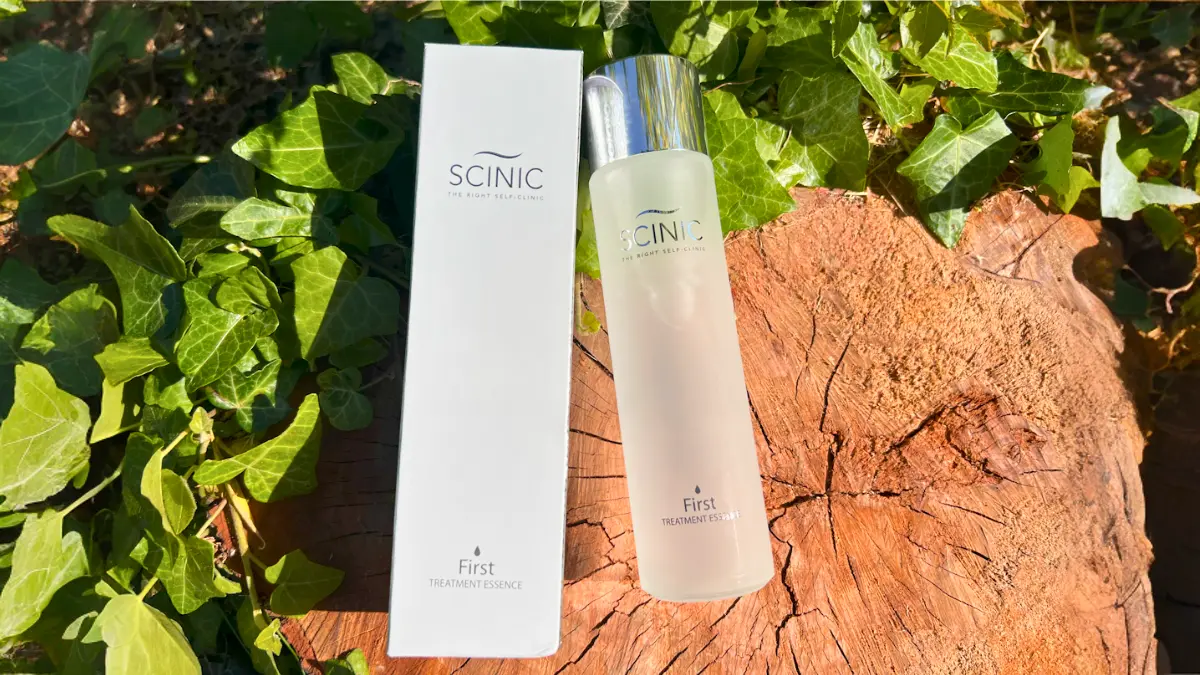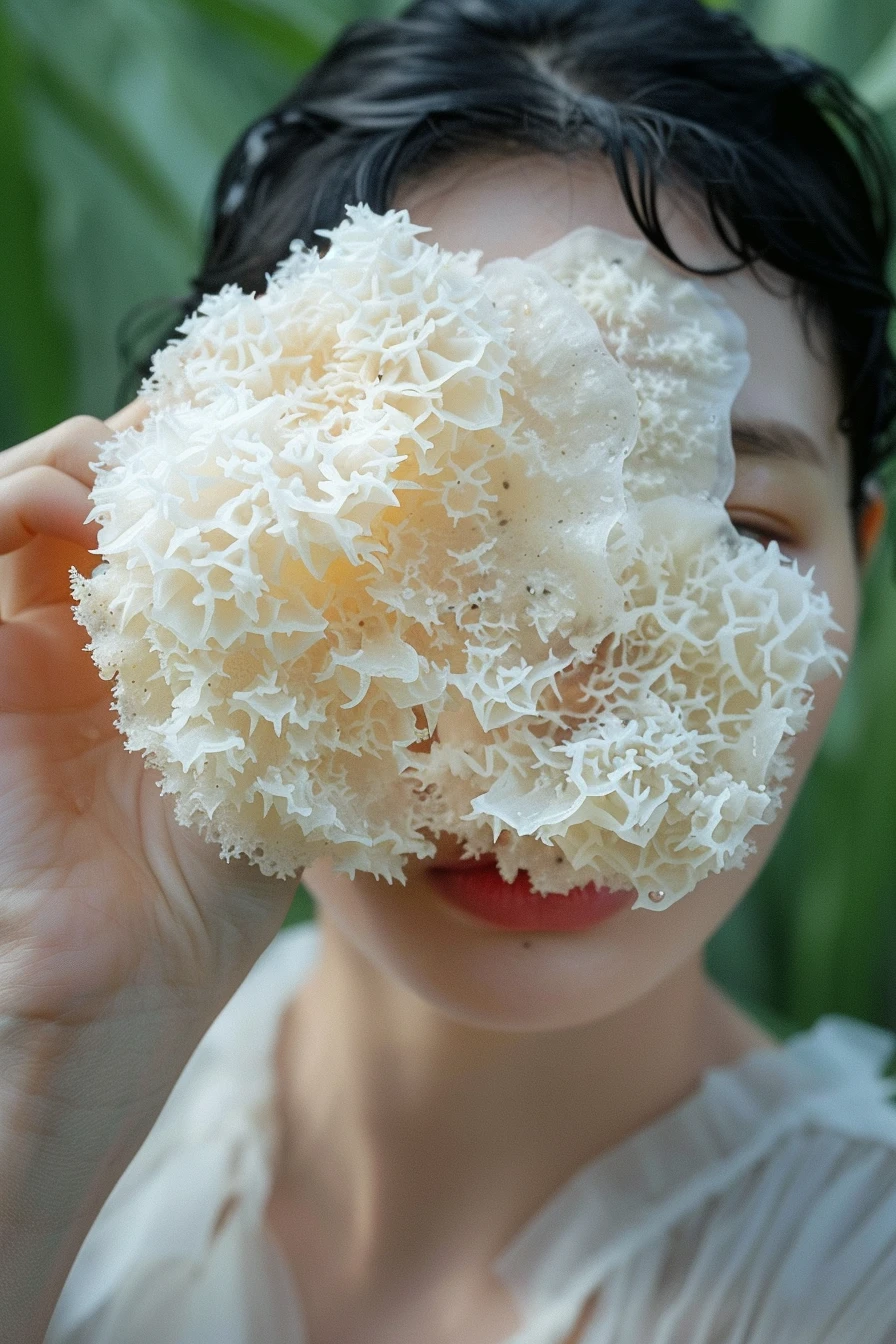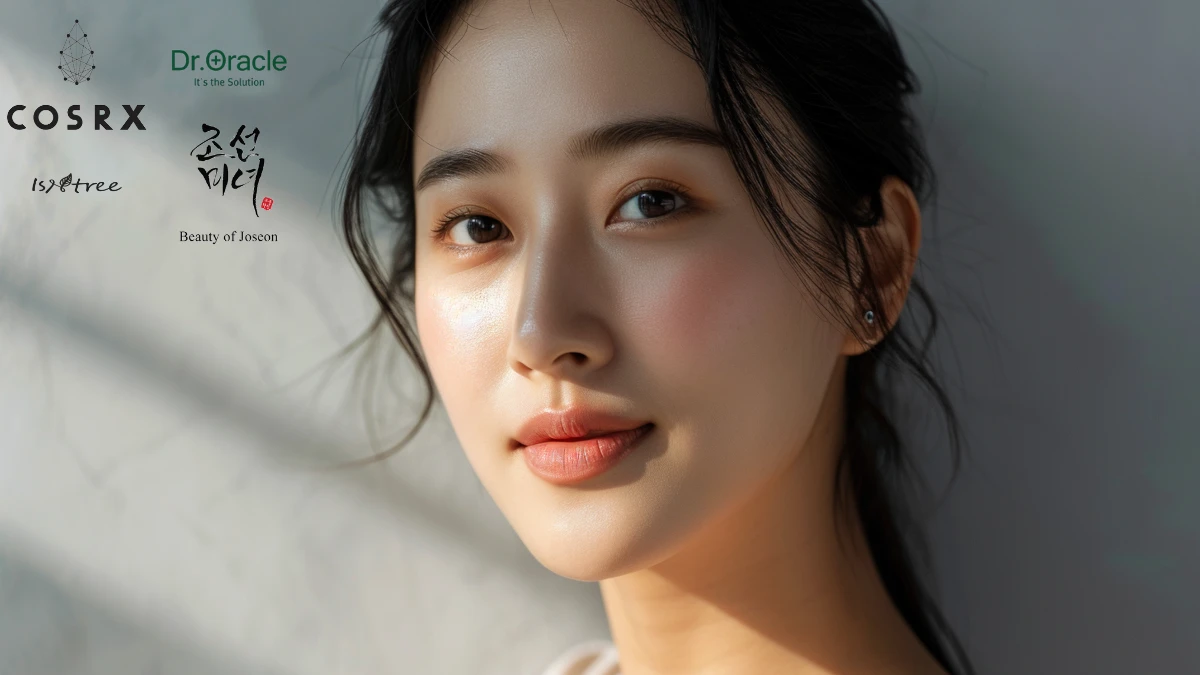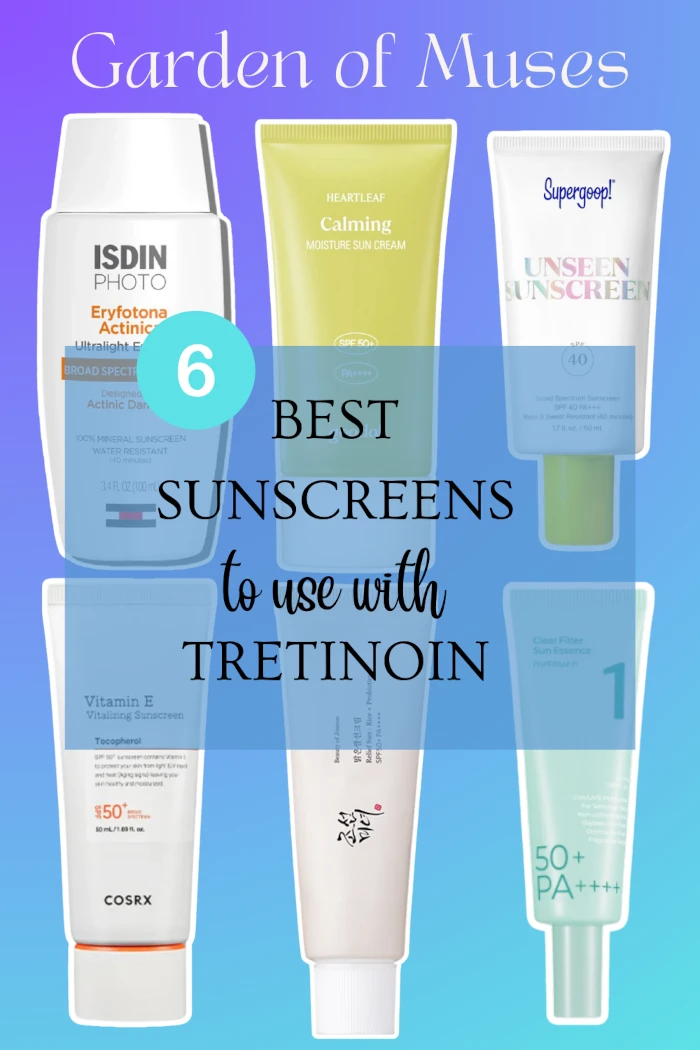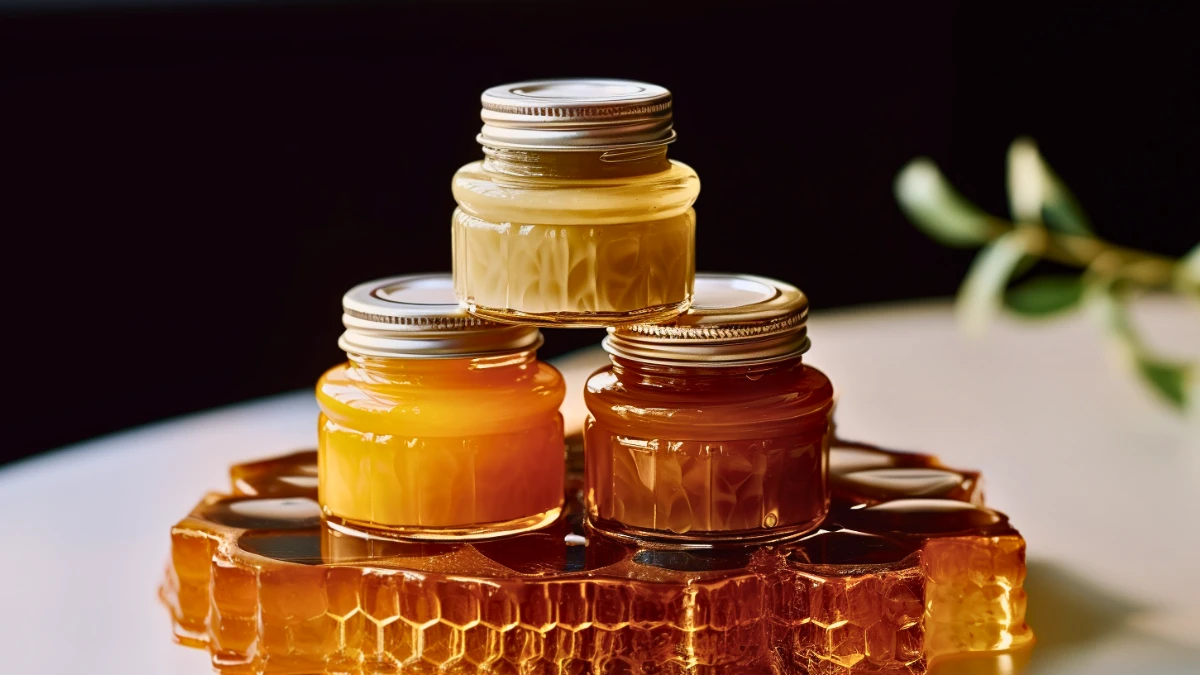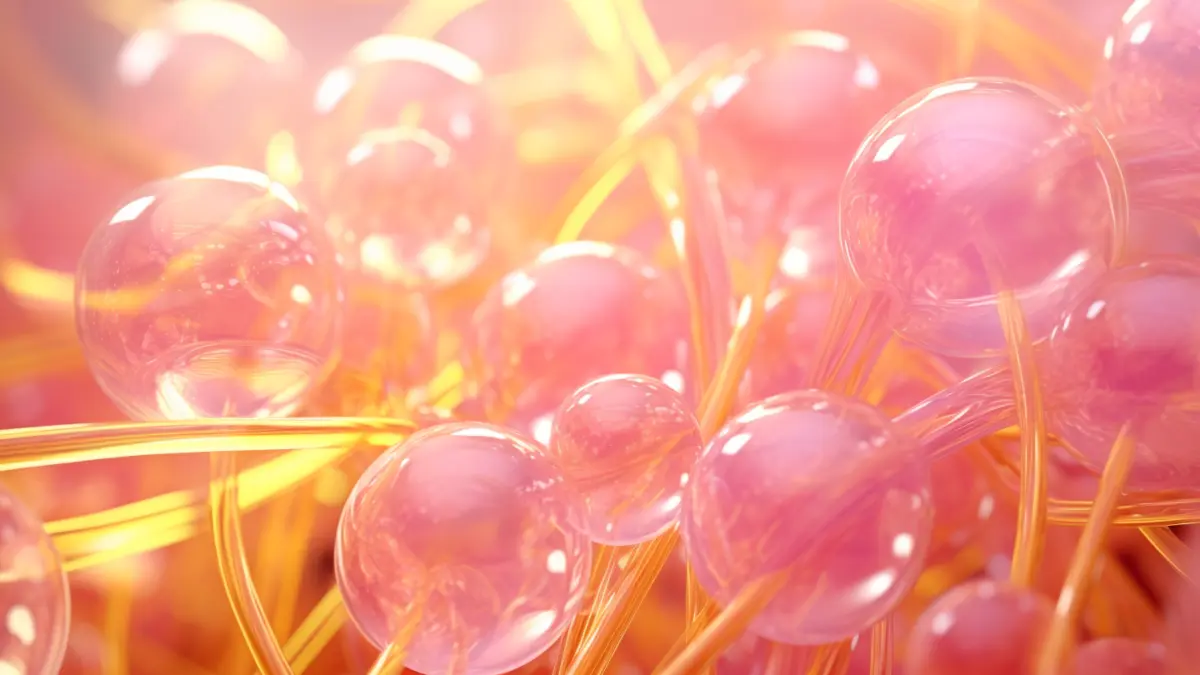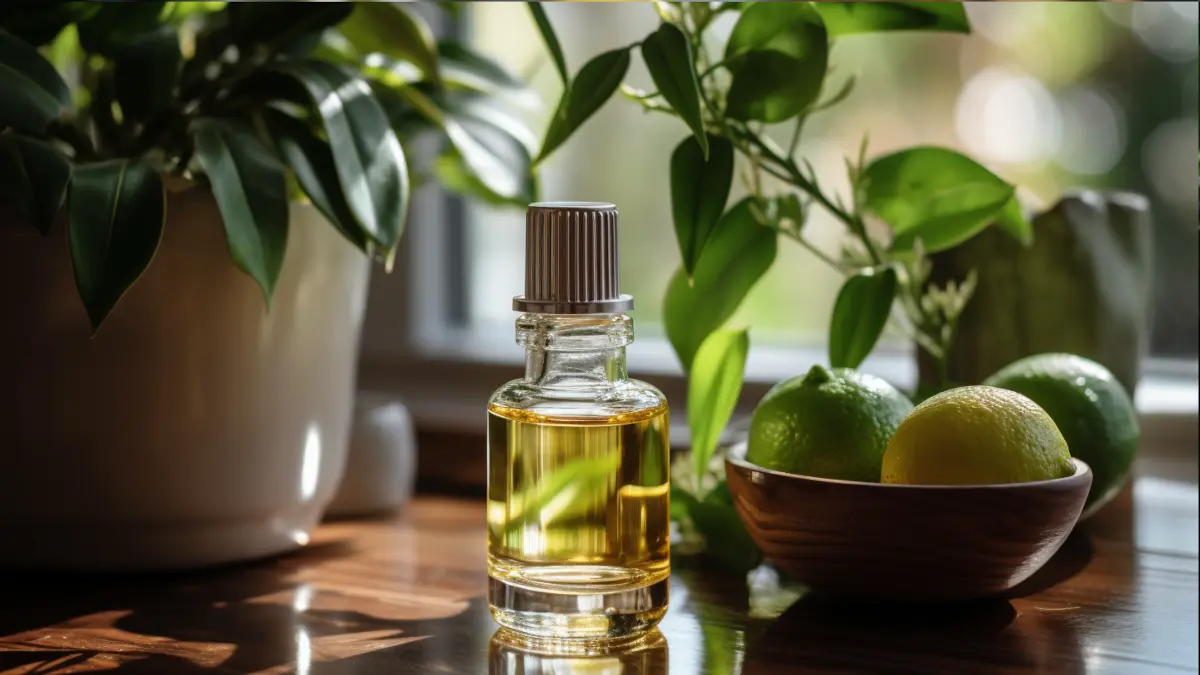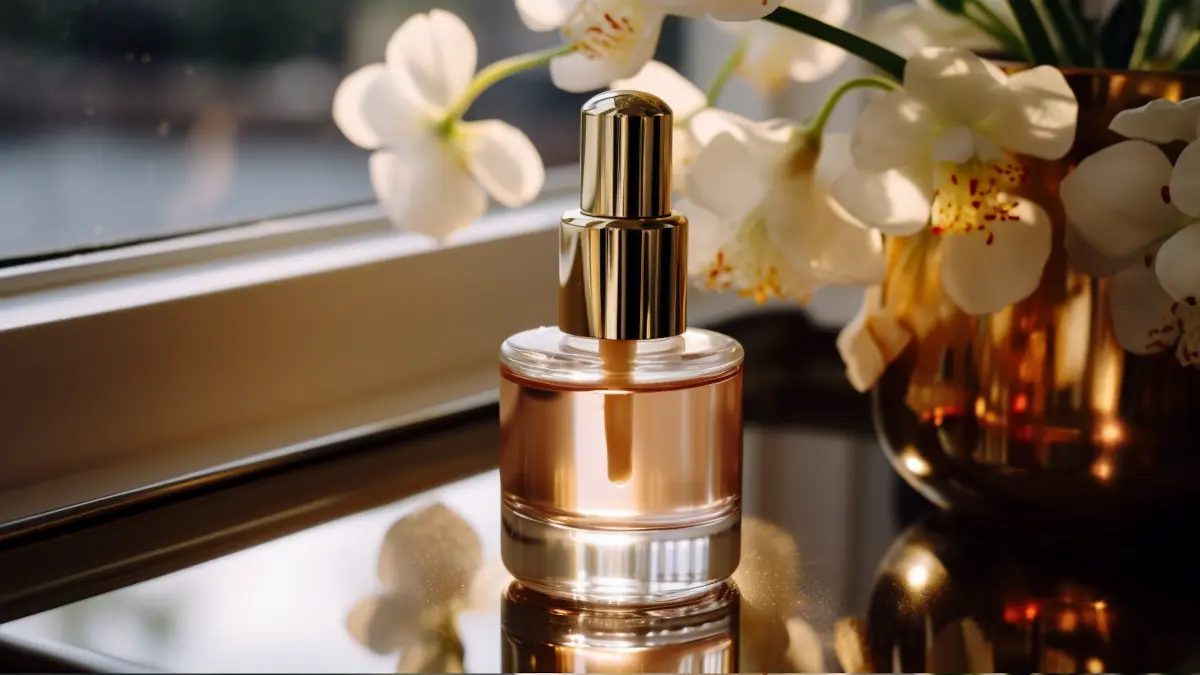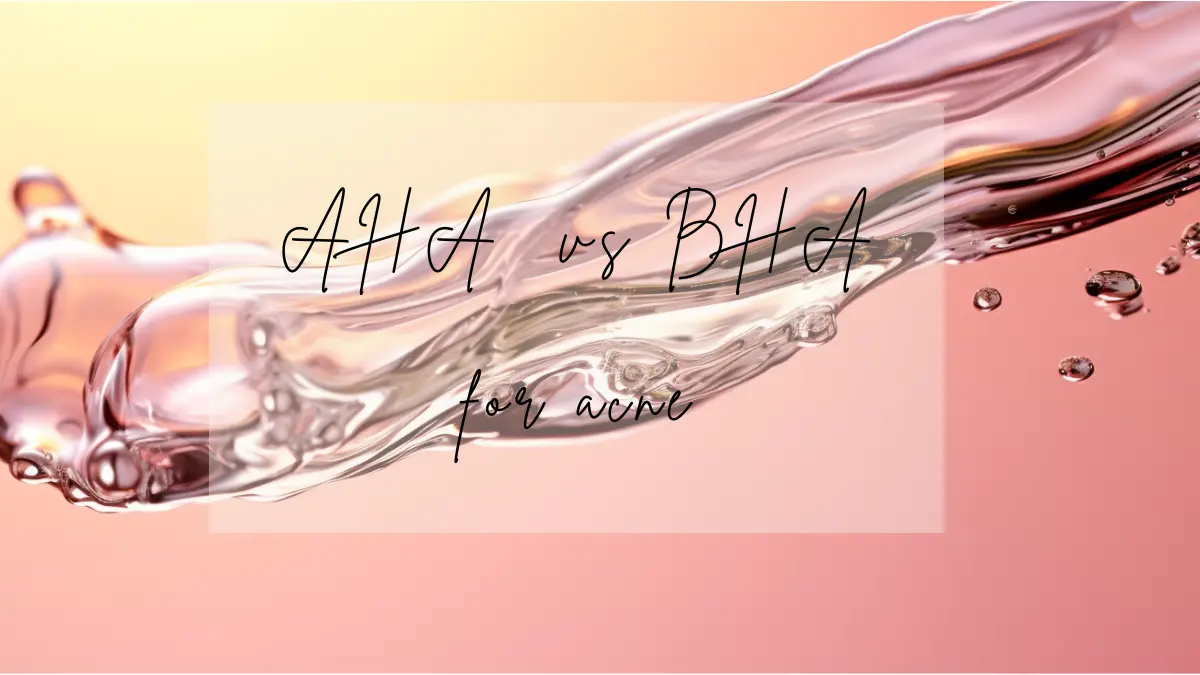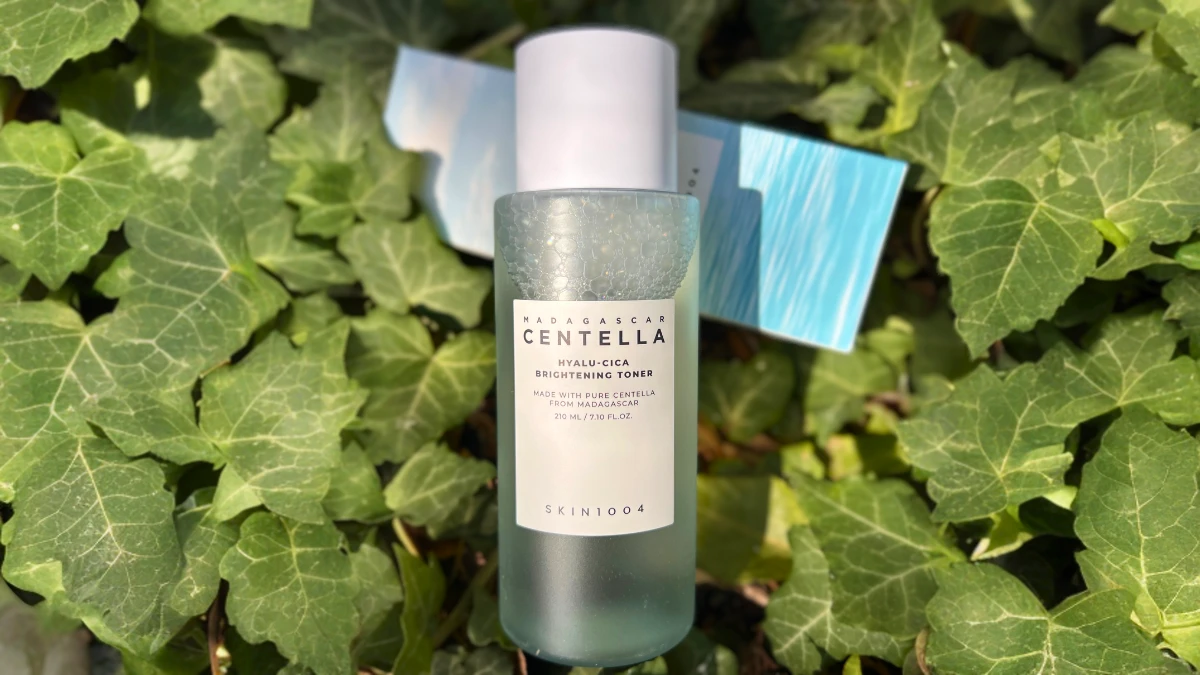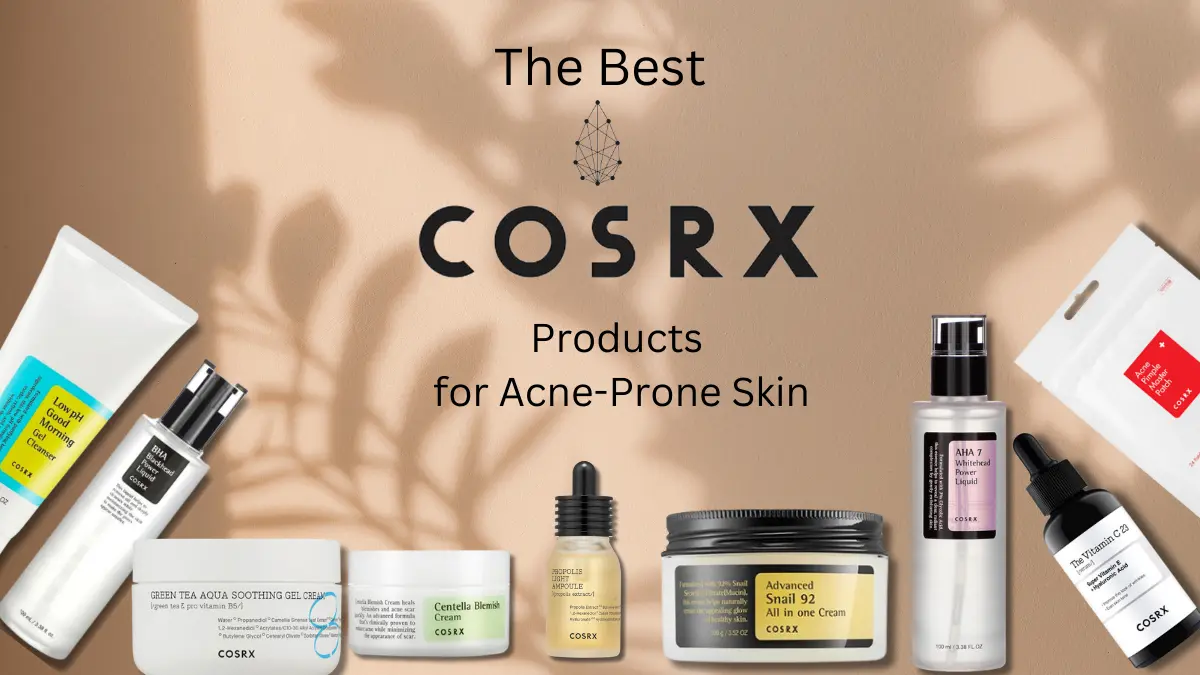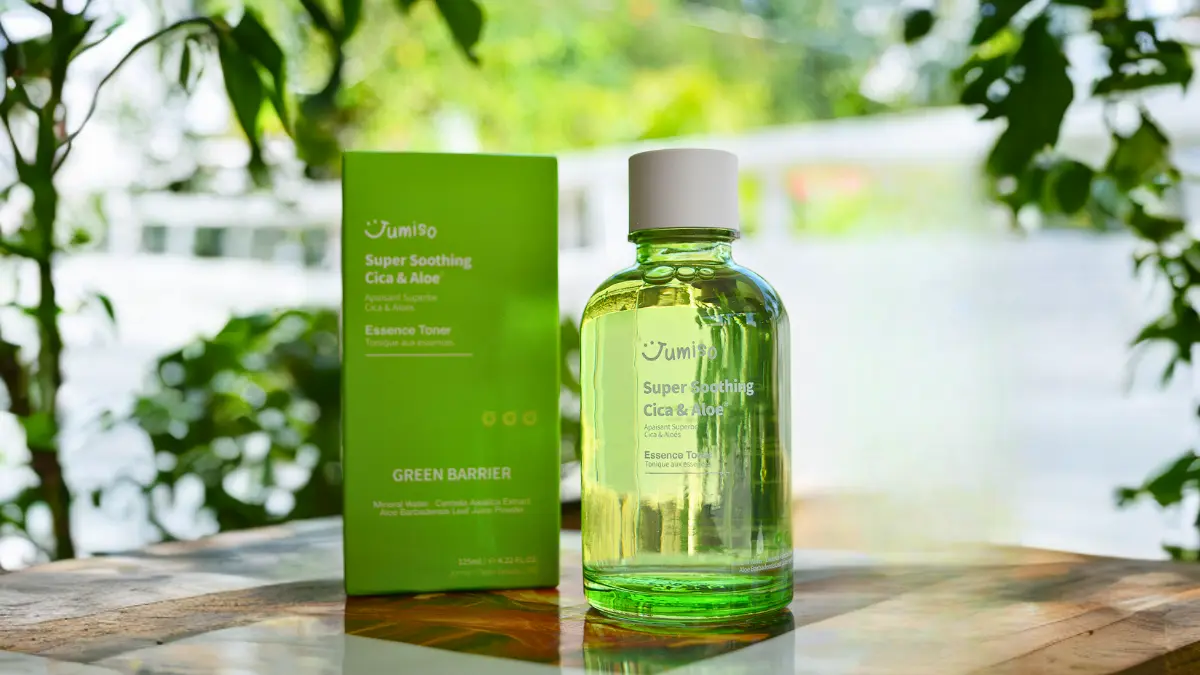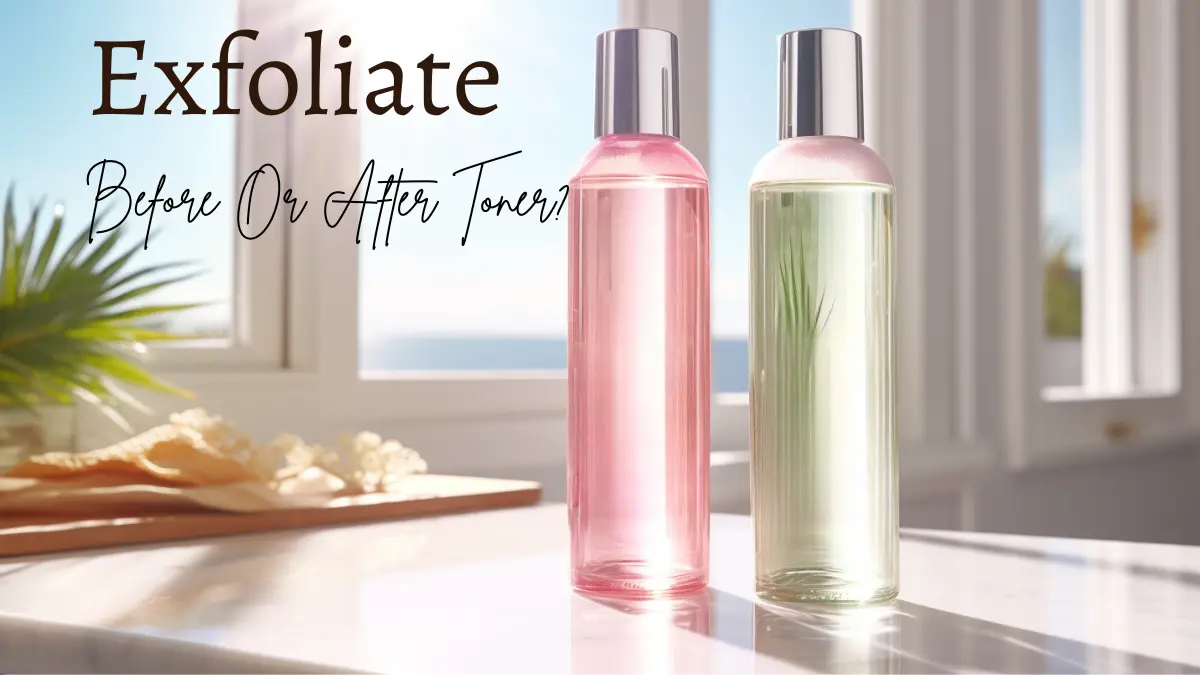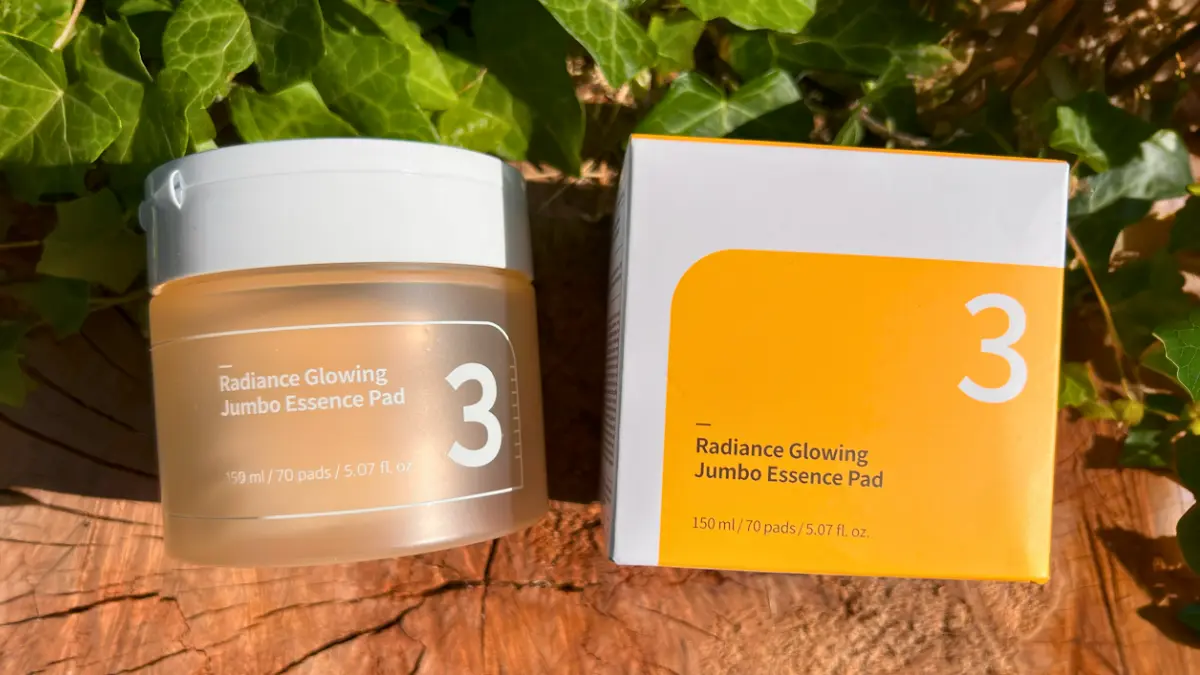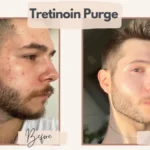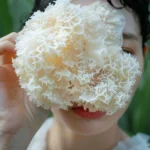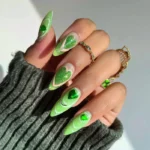The Scinic First Treatment Essence has stood the test of time, continually trending as one of South Korea’s most popular treatment essences on the market. I have been seeking a replacement for my discontinued Holy Grail [Still bitter about that, Missha].
Scinic First Treatment Essence Review:
Where to Buy the Scinic First Treatment Essence?
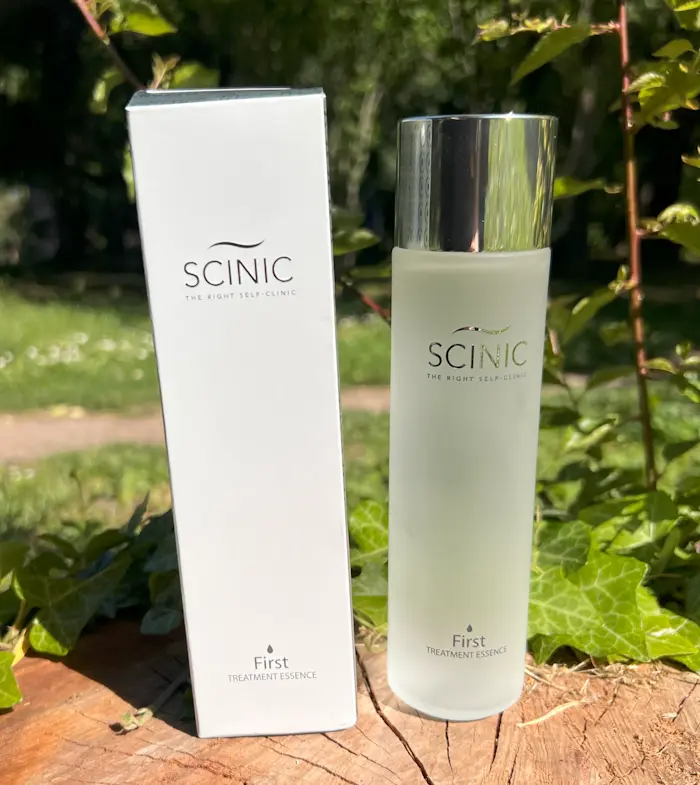
Like most first-treatment essences, the Scninic FTE has excellent undiluted skin-benefiting ingredients. But, unlike most FTEs, Scinic’s has an affordable price tag.
The First Treatment Essence comes in a 5.07 fl. oz. / 150ml glass bottle and retails for $11-$24. For all you lucky people in the US who can get Prime delivery, you can buy the first treatment essence from Scinic’s official store on Amazon*.
You can also shop for Scinic First Treatment Essence on trusted Asian international shops, such as YesStyle* and StyleVana*.
Here’s our editor’s guide to shopping for Korean skincare.
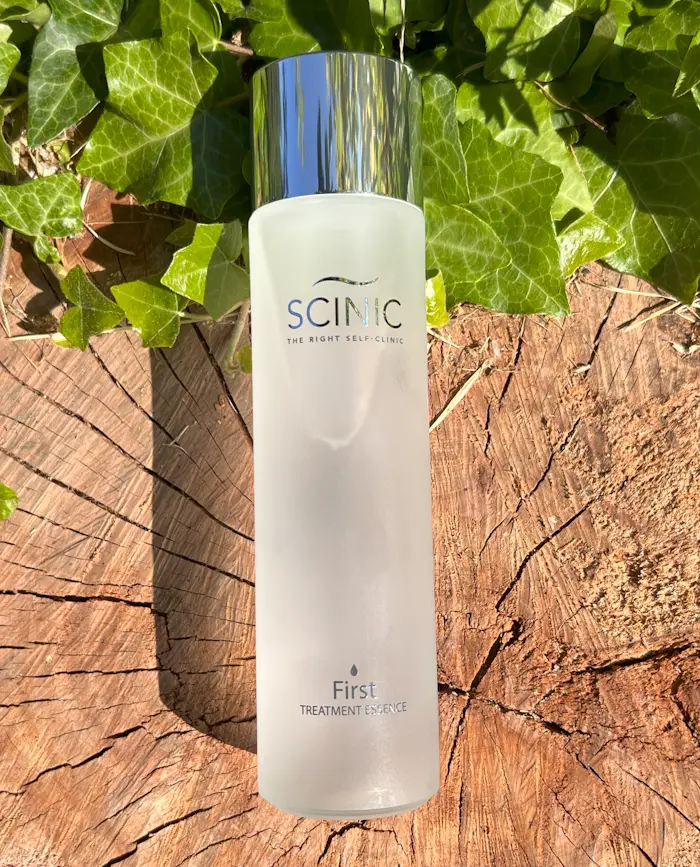
The Scinic Brand
SCINIC is a Korean skincare brand that was launched in 2003. Their products are specifically designed to provide effective solutions for various skin concerns, using a combination of natural and scientific ingredients. SCINIC’s philosophy of “Science + Natural + Clinic” is reflected in its skincare line, which delivers fast and instant results for the skin.
Kyung Soo-Jin, a well-known Korean actress, has expressed her trust and admiration for SCINIC’s First Treatment Essence. This product has gained immense popularity as an essential ingredient for achieving the coveted Korean glass-skin complexion.
SCINIC creates nourishing skincare products using natural ingredients such as seeds, algae extracts, hyaluronic acid, marine collagen, and traditional Korean snail mucin. The Korean brand is alcohol-free and devoid of artificial fragrances and dyes, making it an excellent choice for users with sensitive skin.
What is the Scinic First Treatment Essence?
As its name says, Scinic First Treatment Essence is a treatment essence. Treatment essence, first essence, first treatment essence, or FTEs, are watery essences used to revitalize, rejuvenate, and exfoliate the skin. It can also do other things like hydrating, prepping, brightening, and anti-oxidizing.
A treatment essence differs from a first serum in that it has a lighter consistency and usually comes in a tall glass bottle.
In addition, it is often made of fermented yeast extract, although some treatment essences are made of biotechnology or other fermented ingredients. Treatment essences tend to be waterless (undiluted) without any fragrance added.
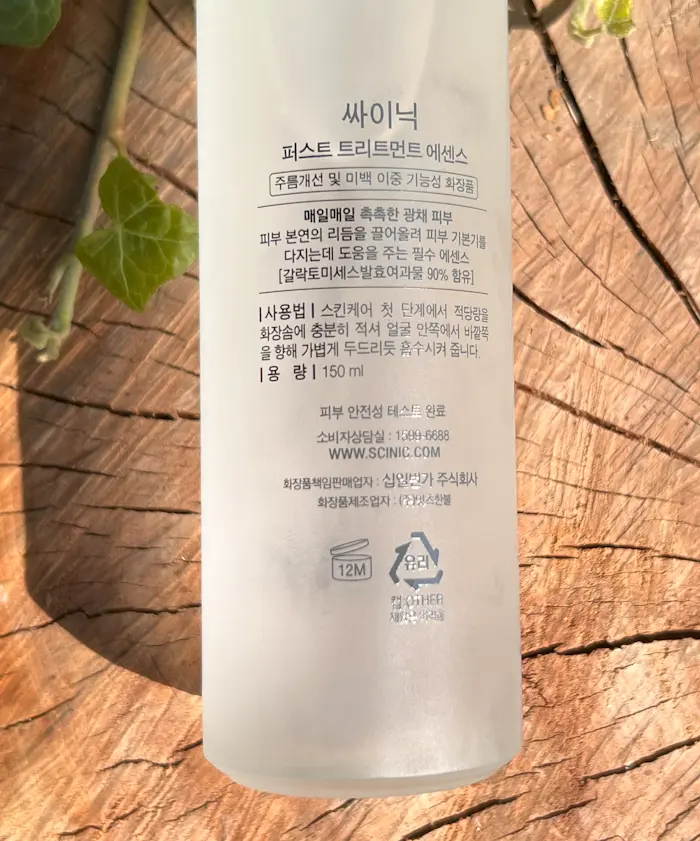
Scinic First Treatment Essence Claims
I struggled to find this product on a brand website where I prefer to gather advertising information, but here are the product claims from YesStyle:
Fortified by 90% Pitera, which is a wonderful fermented ingredient that helps promote rapid cell turnover and makes skin look more refined and smoother.
Scinic’s First Treatment Essence also helps improve skin tone and boost hydration without the use of parabens, artificial colors, silicone, ethanol, mineral oil and benzophenone.
YesStyle*
Who Is this First Treatment Essence For?
I would recommend this for every skin type.
Not sure what your skin type is? Please read our guide on Skin types & skin conditions.
Scinic First Treatment Essence Ingredients
Scinic First Treatment Essence Ingredients List (last checked [current_year])
Galactomyces Ferment Filtrate, Butylene Glycol, Glycereth-26, Niacinamide, Pentylene Glycol, Caprylhydroxamic Acid, Adenosine, Sodium Citrate, Citric Acid, Disodium EDTA, Glycyrrhiza Glabra (Licorice) Root Water, Portulaca Oleracea Extract, Rubus Coreanus Fruit Extract, Sea Water.
Ingredients referred from the Scinic official website.
Active Herbs Humectant/Moisturizing Brightening Ferments
Ingredients Analysis
Like most treatment essences, Scinic First Treatment Essence has a concentrated formulation, having water as its last ingredient. This means it contains concentrated skin-benefiting ingredients, thus justifying the higher price tags. Treatment essence has many functions, but it is primarily used to prep, hydrate, exfoliate, and rejuvenate the skin, hence the nickname “miracle water” in Asia.
You can also use treatment essence to replace toner if you practice double cleansing and use something moisturizing later. If you use a cleansing toner, then use this after the cleansing toner.
Galactomyces Ferment Filtrate
Due to its fermentation process, Galactomyces Ferment Filtrate is a common ingredient in Korean beauty products. This ingredient is derived from sake and is a fermented yeast highly regarded as one of the most efficient components in Korean cosmetics. GFF:
- Lessens hyperpigmentation;
- Strengthens the skin barrier;
- Minimizes the appearance of pores;
- Reduces sebum production;
- Reduce acne;
- Slows down aging;
Please read our 101 Guide on Galactomyces Ferment Filtrate to learn more about it.
Butylene Glycol
Butylene glycol is a clear, low-viscosity liquid commonly used as an alternative to propylene glycol. It’s the most widely-used ingredient in Korean skincare products, mainly used as a solvent and skin conditioner.
Why is butylene glycol used in so many skincare products, and is it safe for your skin?
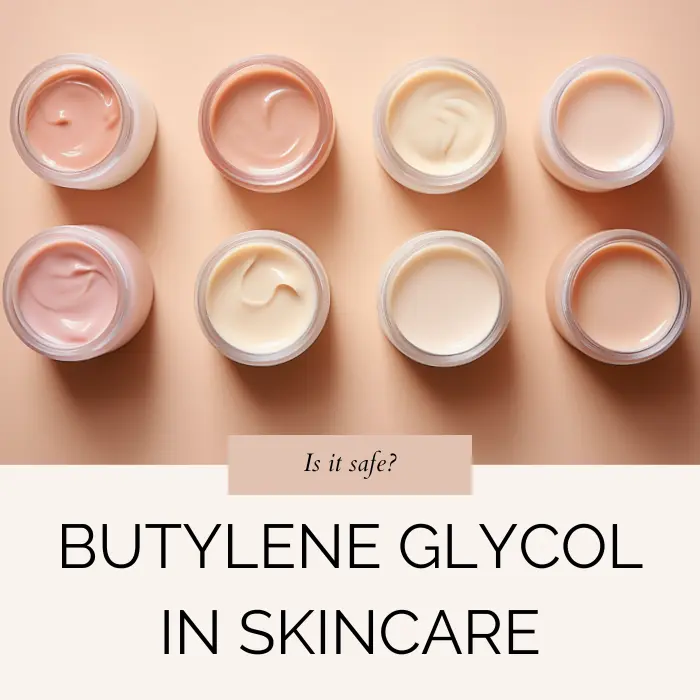
Niacinamide
Niacinamide has been making a splash in the Western market over the last few years but has been a superstar in Asian skincare for decades. This beauty powerhouse is the topical form of vitamin B3.
Several well-documented studies show that when used topically, niacinamide can:
- Strengthen the skin barrier by increasing ceramides and lipids, increasing stratum corneum thickness, and decreasing transepidermal water loss;
- Improve the surface structure and smoothes out wrinkles;
- Boost hydration;
- Control sebum production;
- Reduce acne;
- Calm redness and even out red blotchiness;
- Improve skin texture;
- Lessen hyperpigmentation;
- Brighten sallowness of the skin;
- Treat rosacea, melasma and psoriasis.
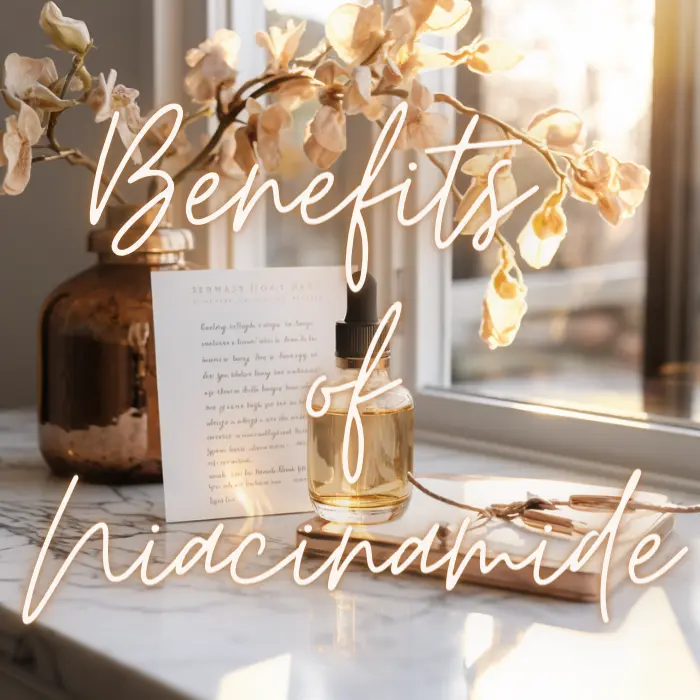
Long story short, niacinamide does everything, and the good news is that it is well-tolerated by most skin types.
To learn more, please read:
- Complete Guide on Niacinamide
- How to Reduce Hyperpigmentation with Niacinamide
- Treat Hyperpigmentation: 11 Best Ingredients in [current_year]
Portulaca Oleracea
Portulaca Oleracea is a beautiful source of antioxidants and fatty acids. It has also been found to reduce inflammation and improve the skin’s protective barrier.
Scinic First Treatment Essence does not contain hyaluronic acid, alcohol, essential oils, or fragrance.
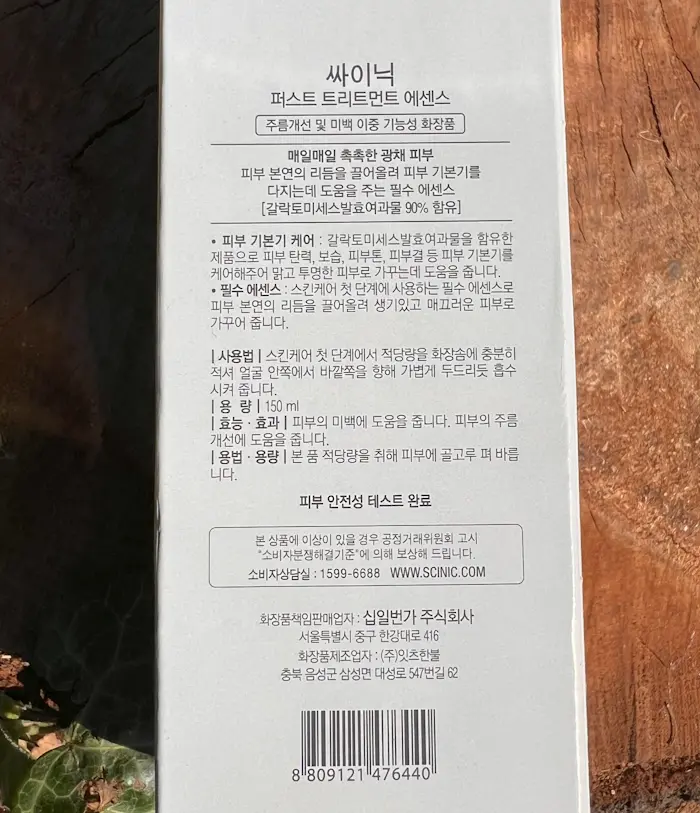
Packaging
The packaging is functional and does not leak, which is all I require in a product.
Scinic First Treatment Essence is packaged like most other first treatment essences before it, focused in a frosted glass bottle with a hole opening for dispensing the product.
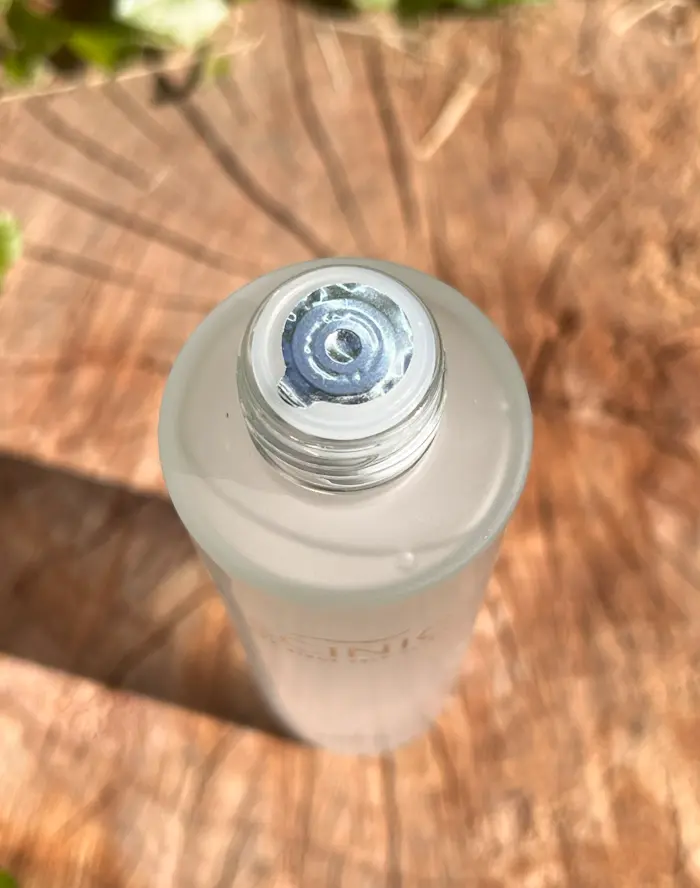
Scent
There is barely any scent, only a slight yeasty sweetness if searching for it, and no added artificial fragrance.
Texture
It is a transparent liquid. It comes in a watery consistency that feels hydrating and prepping on the skin.
I find it easy enough to apply this with just my hands. No cotton rounds are necessary!
My Personal Experience with the Scinic First Treatment Essence
For the past few years, I have been searching for the perfect hydrating first treatment essence replacement for Missha’s Original First Treatment Essence for the last few years. While I’ve come across some options, this product is the closest I’ve found, although it doesn’t match the original.
I have been using this for about two months and still have half of the bottle left. It is a mild, refreshing, hydrating liquid resembling the Missha essence.
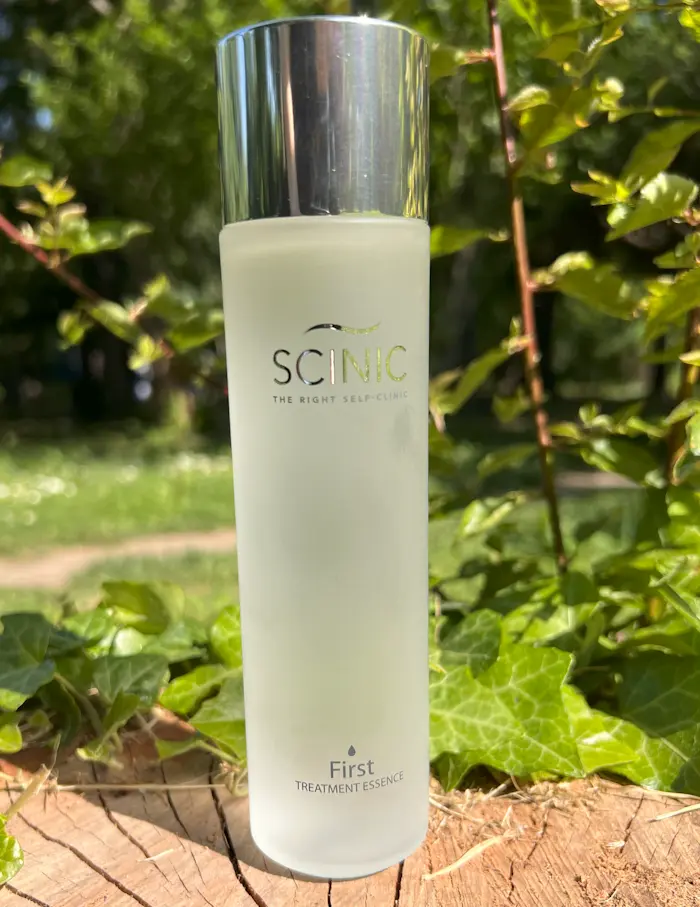
Let’s change the pace of my regular reviews. I want to start with the con first. My main qualm with the Scinic FTE is it does not seamlessly absorb into the skin. Usually, I would apply any active products [AHA, Vitamin C, etc.] onto my skin for maximum exfoliation benefit, then follow up with a hydrating toner. If you want to know why, please read Should You Exfoliate Before or After Toner.
However, the Scinic First Treatment Essence wants to be first in line after cleansing for any skincare routine. If I try to apply any other product before this Scinic First Treatment Essence, it feels like Scinic FTEe is washing off the previous product. When I attempt to use this Scinic essence product as a second step instead of a first step, it makes my face feel sticky, and the previous product “pills” on my skin.
Still, this is a minor drawback. Since Missha was discontinued, the Scinic First Treatment Essence is the best stand-alone product for this skincare step. Scinic First Treatment Essence does everything a well-formulated first treatment essence promises to do.
It brightens my skin and makes me look alive in the mornings before I have had time to consume an adequate amount of coffee. It tones down redness after cleansing. It makes my skin feel more plump, though these results are less long-lasting than other hydrating toners I have tried.
[sibwp_form id=1]
The main benefit is this performs the most similarly to Missha’s original formula, but it is not a dupe.
Scinic First Treatment Essence tightens my pores, refines my skin texture, and increases my skin’s overall radiance. I see a remarkable improvement in my overall complexion. Given its properties, this is a complimentary product to the viral Beauty of Joseon Glow Deep Serum, as they both can work well to enhance your skin’s texture and strength.
I am also less prone to breakouts despite hormonal imbalances. I wouldn’t say that this is a moisturizing essence, but it has the right consistency that meets my need for a first essence, which I would label “hydrating and refreshing.” In addition, the area under my eyes appears smoother, and my pores appear smaller ever since I added this to my skincare routine.
How to Use the Scinic First Treatment Essence?
The Scinic First Treatment Essence is the 0 step in your skincare routine, one you use after cleansing and before a toner, serum, or moisturizer.
- First Cleanse;
- Second Cleanse; (optional)
- Exfoliate (optional);
- Vitamin C (preferably in the morning);
- Apply Scinic First Treatment Essence with your palms or a cotton pad;
- Tap over your face with your palms to aid the absorption of the essence;
- Follow with the rest of your treatment serums;
- Moisturizer
- Sleeping mask (optional) or SPF (non-optional in the AM!)
Pros
- brightening
- hydrating
Cons
- slightly sticky
Verdict
This is one of the more affordable first treatment essences I have tried. My skin reacts nicely with this product, so I like having it in my routine, but it is not a staple step like cleansing or moisturizing. This product is widely available online for international consumers, so accessibility should not be an issue.
In short, the Scinic First Treatment Essence is a lightweight, hydrating treatment essence that can brighten up my skin and refine my pores. It also has a beautiful consistency that is perfect for a first essence. A repurchase in the future!
Will I Repurchase the Scinic First Treatment Essence?
A probable repurchase in the future!
Rating 4/5
Shop for Scinic First Treatment Essence
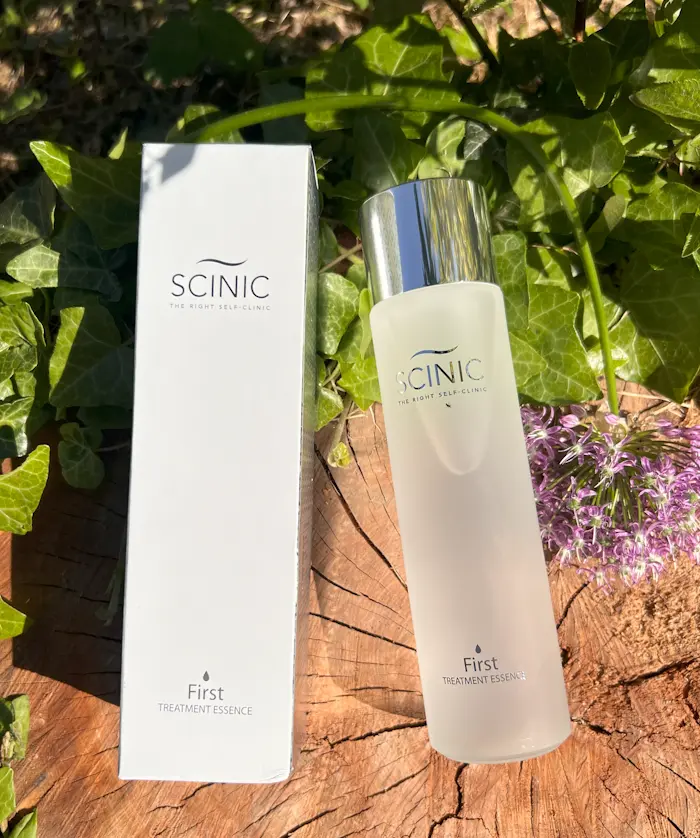
Lastly, I was not paid for this review or received it as a gift.
As always, you do you; be kind to your skin and yourself! Remember that every person’s skin and skin type is different, so what might work for me might not work for you, and vice versa. So, before adding a new product to your skincare routine, it pays to do a little research first.
Before adding the Scinic First Treatment Essence to your skincare regimen, ensure you are not allergic to it or its ingredients. You should also consult your doctor if you are pregnant, breastfeeding, or have any medical conditions or medications that may interact with the Scinic First Treatment Essence. Always do a patch test before applying the Scinic First Treatment Essence on your skin to avoid adverse reactions.
I am not a dermatologist or licensed aesthetician, but I have sufficient experience and knowledge I gained by testing multiple products and self-exploration. Unsure? Best to consult your dermatologist.
Happy skin experimenting, and don’t forget the sunscreen!
Show Me Proof
- Woolridge, JaNay, Amy Koshoffer, Ana Luisa Kadekaro, R. Randall Wickett, Raymond E. Boissy, and Tomohiro Hakozaki. “Galactomyces ferment filtrate reduces melanin synthesis and oxidative stress in normal human melanocytes.” In Journal of the American Academy of Dermatology, vol. 70, no. 5, pp. AB127-AB127. 360 PARK AVENUE SOUTH, NEW YORK, NY 10010-1710 USA: MOSBY-ELSEVIER, 2014.
- Takei, K., C. Mitoma, A. Hashimoto‐Hachiya, M. Takahara, G. Tsuji, T. Nakahara, and M. Furue. “Galactomyces fermentation filtrate prevents T helper 2‐mediated reduction of filaggrin in an aryl hydrocarbon receptor‐dependent manner.” Clinical and Experimental Dermatology 40, no. 7 (2015): 786-793.
- Lee, Minji, Hyun-Soo Kim, Aryeong Cho, So Hyeon Jeon, Na Kyeong Lee, Kyu Joong Ahn, and In Sook An. “The effects of essence-formed cosmetic ingredients containing the galactomyces ferment filtrate on skin improvements in keratinization, pores, sebum excretion, brightness and acne.” Kor J Aesthet Cosmetol 12, no. 1 (2014): 77-84.
- Tanno, O., Y. Ota, N. Kitamura, T. Katsube, and S. Inoue. “Nicotinamide increases biosynthesis of ceramides as well as other stratum corneum lipids to improve the epidermal permeability barrier.” British Journal of Dermatology 143, no. 3 (2000): 524-531.
- Mohammed, D., J. M. Crowther, P. J. Matts, J. Hadgraft, and M. E. Lane. “Influence of niacinamide containing formulations on the molecular and biophysical properties of the stratum corneum.” International journal of pharmaceutics 441, no. 1-2 (2013): 192-201.
- Snaidr, Victoria A., Diona L. Damian, and Gary M. Halliday. “Nicotinamide for photoprotection and skin cancer chemoprevention: A review of efficacy and safety.” Experimental dermatology 28 (2019): 15-22.
- Gehring, W. “Nicotinic acid/niacinamide and the skin.” Journal of Cosmetic Dermatology 3, no. 2 (2004): 88-93.
- Soma, Yoshinao, Masato Kashima, Akiko Imaizumi, Hideto Takahama, Tamihiro Kawakami, and Masako Mizoguchi. “Moisturizing effects of topical nicotinamide on atopic dry skin.” International journal of dermatology 44, no. 3 (2005): 197-202.
- Draelos, Zoe Diana, Akira Matsubara, and Kenneth Smiles. “The effect of 2% niacinamide on facial sebum production.” Journal of Cosmetic and Laser Therapy 8, no. 2 (2006): 96-101.
- Shahmoradi, Zabiolah, Farib Iraji, Amir Hossein Siadat, and Azamosadat Ghorbaini. “Comparison of topical 5% nicotinamid gel versus 2% clindamycin gel in the treatment of the mild-moderate acne vulgaris: A double-blinded randomized clinical trial.” Journal of Research in Medical Sciences: The Official Journal of Isfahan University of Medical Sciences 18, no. 2 (2013): 115.
- Ungerstedt, J. S., M. Blombäck, and T. Söderström. “Nicotinamide is a potent inhibitor of proinflammatory cytokines.” Clinical & Experimental Immunology 131, no. 1 (2003): 48-52.
- Bissett, D. L., K. Miyamoto, P. Sun, J. Li, and C. A. Berge. “Topical niacinamide reduces yellowing, wrinkling, red blotchiness, and hyperpigmented spots in aging facial skin 1.” International journal of cosmetic science 26, no. 5 (2004): 231-238.
- Darlenski, Razvigor, Jana Kazandjieva, Nikolai Tsankov, and Joachim W. Fluhr. “Acute irritant threshold correlates with barrier function, skin hydration and contact hypersensitivity in atopic dermatitis and rosacea.” Experimental dermatology 22, no. 11 (2013): 752-753.
- Navarrete-Solís, Josefina, Juan Pablo Castanedo-Cázares, Bertha Torres-Álvarez, Cuauhtemoc Oros-Ovalle, Cornelia Fuentes-Ahumada, Francisco Javier González, Juan David Martínez-Ramírez, and Benjamin Moncada. “A double-blind, randomized clinical trial of niacinamide 4% versus hydroquinone 4% in the treatment of melasma.” Dermatology research and practice 2011 (2011).
- Namazi, Mohammad Reza. “Nicotinamide: a potential addition to the anti‐psoriatic weaponry.” The FASEB journal 17, no. 11 (2003): 1377-1379.
- Zhao, Hengguang, Shuang Li, Fuling Luo, Qian Tan, Hui Li, and Weikang Zhou. “Portulaca oleracea L. aids calcipotriol in reversing keratinocyte differentiation and skin barrier dysfunction in psoriasis through inhibition of the nuclear factor κB signaling pathway.” Experimental and Therapeutic Medicine 9, no. 2 (2015): 303-310.
- Uddin, Md Kamal, Abdul Shukor Juraimi, Md Eaqub Ali, and Mohd Razi Ismail. “Evaluation of antioxidant properties and mineral composition of purslane (Portulaca oleracea L.) at different growth stages.” International journal of molecular sciences 13, no. 8 (2012): 10257-10267.
- Uddin, Md Kamal, Abdul Shukor Juraimi, Md Sabir Hossain, Most Nahar, Altaf Un, Md Eaqub Ali, and M. M. Rahman. “Purslane weed (Portulaca oleracea): a prospective plant source of nutrition, omega-3 fatty acid, and antioxidant attributes.” The Scientific World Journal 2014 (2014).
